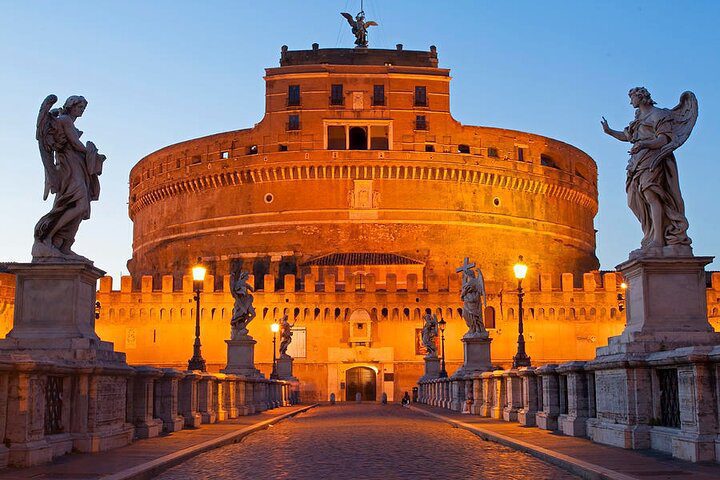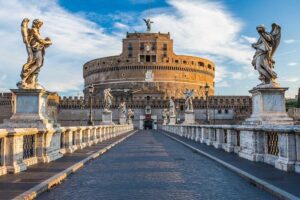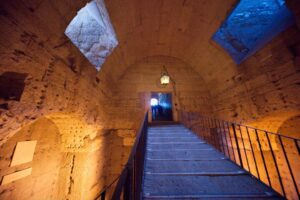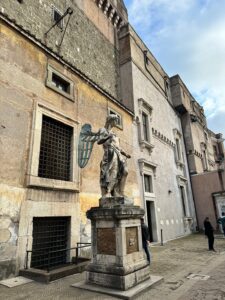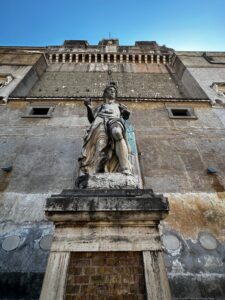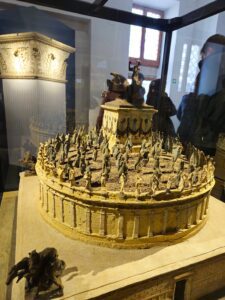Description
Castel Sant'Angelo, originally commissioned by Emperor Hadrian as a mausoleum for himself and his family, is a monumental fortress located along the banks of the Tiber River in Rome. Construction began in 135 AD, and the structure has undergone various transformations over the centuries. Initially a tomb, it was later converted into a fortress and papal residence. The impressive cylindrical structure is crowned by a statue of the Archangel Michael, which gave the castle its name and symbolizes the protection of the city. Its rich history includes serving as a refuge for popes during times of siege, further enriching its significance in Roman history.
Visitors to Castel Sant'Angelo can explore the expansive interior, which features a series of beautifully decorated rooms, corridors, and terraces that reflect its history as both a mausoleum and a fortress. The upper terrace offers stunning panoramic views of the city and the Vatican, making it a popular spot for photography. The museum inside showcases a collection of artifacts, including armour, art, and historical documents that narrate the castle's fascinating past. Additionally, the castle is linked to the Vatican City by the Passetto di Borgo, a fortified corridor that allowed popes to escape during times of danger.
A visit to Castel Sant'Angelo is not just a journey through history but also an opportunity to appreciate one of Rome's most iconic landmarks. Its combination of architectural grandeur and historical significance makes it a must-see destination for tourists. Whether exploring the ancient halls, enjoying the views, or learning about its intriguing past, Castel Sant'Angelo offers a unique perspective on Rome's evolution from ancient times to the present day. It is a testament to the city's resilience and its ability to adapt throughout the centuries.
Location
-
Lungotevere Castello, 50, 00193 Roma, RM, Italy
